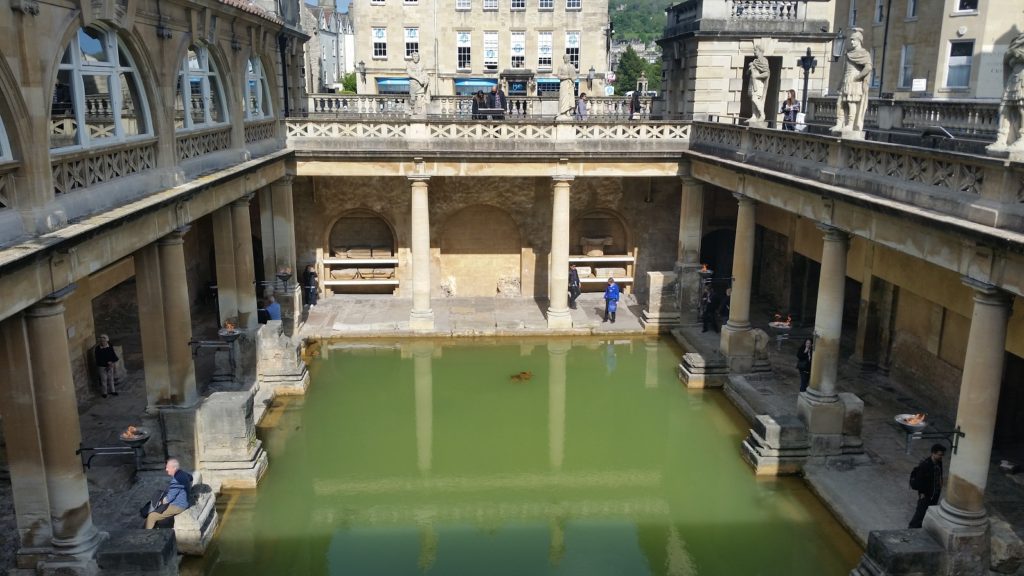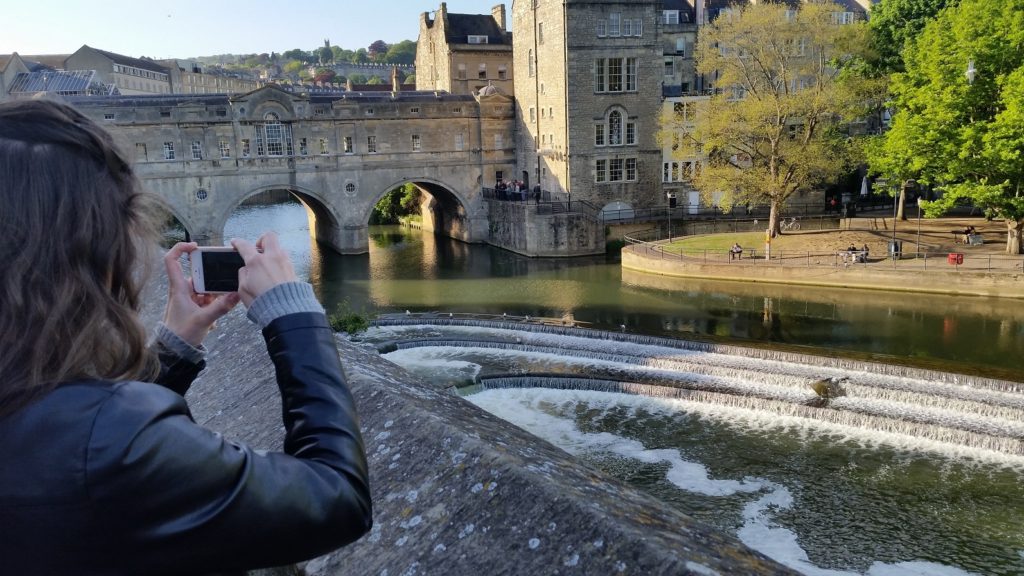It seems to be obligatory that all tourists in England must go see a certain circle of stones. The reason is that they are quite ancient, dating back to the third millennium B.C., and that they remain a source of academic study: how did they get all those huge stones there and what was the purpose of this structure?
Stonehenge probably started as a burial place and then developed into a way to calculate the seasons by the position of the sun in relation to the stones. Naturally, since this occurred in ancient times, modern New Agers who look to occultic Druids like to think that’s the primary reason for these remains. But it really has more to do with the seasons.
Can you imagine the problem they must have had when the seasons changed?
Other ancient ruins are found in the city of Bath, which became an outpost of the Roman Empire. The Romans sought to re-create their civilization in Britain. One means for doing so was to build an immense public bath over the hot springs (in case you wonder how the city got its name).
What you see here is only the surface of an immense complex underground that can be explored now. It took a few hours to do so.
When the Romans left, the city later was transformed into a spa destination for the high-born who considered the springs to have healing properties. Famous British authors such as Jane Austen would use Bath as a setting in novels; Austen’s Northanger Abbey is one example.
The elite would hang out at an establishment known as the Pump Room, where they had their tea and engaged in polite conversation. The Pump Room still maintains a lively existence.
So we simply had to taste for ourselves:
Bath is a beautiful city. I hope in the future I can see more of it.
My account of this trip continues the next two days with a new focus—the highlight for me—C. S. Lewis.






